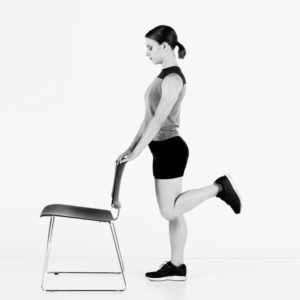
At some point during your life, there is an excellent chance you will know or will yourself experience an injury to your knee. It could be something minor like a tear to your meniscus right up to something significant such as a tear to your anterior cruciate ligament (ACL).
Unlike the old days of, say 20 plus years ago, when post-surgery, the advice was to rest for at least 12 weeks before starting any form of exercise, now the general trend is to start moving as quickly as you can, often in as little as 48 hours after leaving the hospital.
Depending on the extent of your surgery, the exercises that you can use to aid with your recovery are, in my experience, pretty much the same.
It’s important to remember that whilst you aim to regain full strength in the muscles around the knee, part of your rehabilitation should include stretching and mobility exercises. The other point is that as part of your recovery, you may also get some physiotherapy, providing specific exercises to aid your journey.
Having had surgery on both of my knees, I have spent over 25 years working with clients who have had every knee injury possible.
So, what are the main exercises I give to my clients that need my help in this situation?
Step Ups
Make sure the height of your step or platform is no more than 6-8 inches. Ensure that each time you step onto the step, all your foot, including your heel, makes contact. Keep your knees soft, don’t snap or flick the joint. Try and keep your body upright.
Repeat 10-15 times each leg
Hamstring Curls
You can do this in two ways. Firstly, if you can get onto the floor, lay on your front and slowly bring your heels as close to your bum as possible. Then, hold for a second before slowly lowering to the floor again.
If you prefer, you can also do this standing up, supporting yourself with a chair; again, lift your heel to your bum and lower.
Repeat 10-15 times each leg
Squats
The easy way to do a squat is to find a chair and sit down. Keep your back as straight as you can go, from the sitting to the standing position. If you need some support for balance, keep the chair next to a table or wall. As you get stronger, you can repeat the movement without the chair. Removing the chair enables the leg muscle to continually work and not rest as you sit down like before.
Repeat 10-15 times
Walking
Simply walking in a slow controlled manner will strengthen the knee again and build your confidence in moving again. Depending on the extent of your injury, start with a few minutes and build up. If you have access to a treadmill, make sure you don’t walk too fast. Try and keep your body upright and looking straight ahead.
As a general rule of thumb, there is no set period of time for the rehabilitation journey, but the key thing to remember is not to try and do too much too soon. We are all keen for things to get back to normal as quickly as possible, but we must listen to our bodies and remember that it has gone through trauma on some level, so patience is essential. However, if you are committed and focused (which I hope you are), you can increase your repetitions or sets at your leisure if they become too easy. Just take your time, and focus on good technique. You may experience discomfort or tightness during your exercises, but this is normal. Just don’t push it too much!


